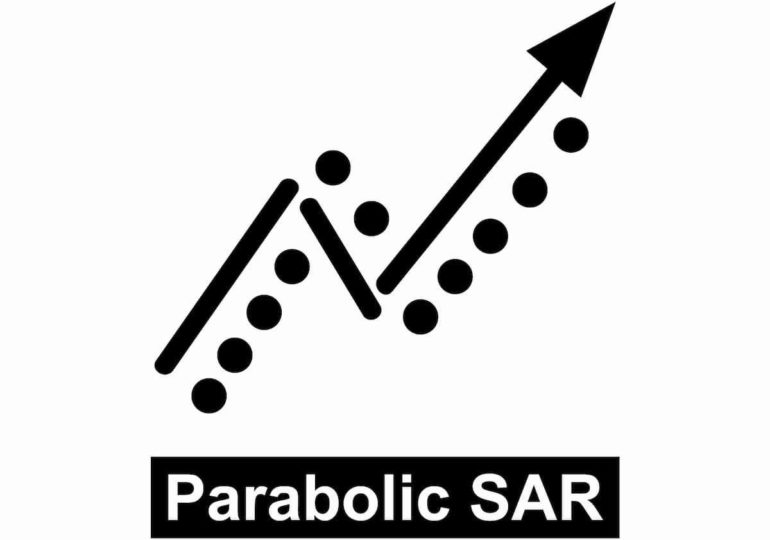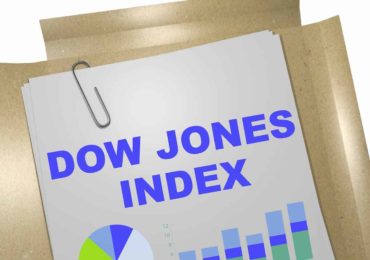Parabolic SAR: Here’s everything you need to know about the indicator
The parabolic SAR (PSAR) is one of the many indicators used by the traders to highlight the movement direction of an asset and understanding the exit and entry points. Read on to find out more about the indicator, its uses, features, advantages, disadvantages, and more. But, before going into detail, let’s take a look at exactly what the indicator is.
So, what exactly is a parabolic SAR?
SAR stands for ‘start and reverse’. A parabolic SAR is basically an indicator that is chiefly used by traders to determine the short-term momentum of a particular asset in the future. J Welles Wilder Jr, the renowned technician, is credited as the developer of this indicator. It is usually applied to trading strategies to help traders determine when stop orders should be placed.
It is also a viable method for setting stop-loss orders. When stocks are rising, the stop-loss is moved to match the indicators of the parabolic SAR. This same idea works for short trades because the indicator falls along with price trends. So, after each price bar, the stop-loss has to be moved to match the indicator’s level.
Reading and understanding the charts
The calculation for the parabolic SAR is quite complicated. The indicator has two parameters that a trader can adjust based on his preferences and needs.
The parameters provided by PSAR are step and maximum step and these determine how sensitive the indicator is to the alterations in price movements. The default setting for the PSAR parameters of the step and maximum step is 0.2 and 0.02, respectively.
The sensitivity of this indicator can be increased by increasing the values of the step and maximum step. However, in increasing the sensitivity, the trader might also have to sacrifice some of its precision because the indicator will provide multiple false signals. Lowering the values of step and maximum step makes the parabolic SAR less sensitive, but increases the accuracy of the signals.
So, what would be the right settings for PSAR?
There is not a precise or correct way of doing this. It varies from one trader to another and depends on their individual preferences.
Traders who are looking for tighter stops for limiting downsides and easily protecting profit, it would be best to go for a high step and an even higher maximum step. For instance, settings such as having the maximum step at .40 and the step at .05 would offer reasonably tight stops, as it can be noted by the level of the PSAR dot and the way it closes to the price. The settings also hold importance for those who want to use parabolic SAR as an indicator for following trends and want this indicator to have higher sensitivity, and hence, a greater frequency of change.
Traders who are looking for more accommodative stops to avoid being stopped prematurely and to have enough breathing room in the trades, it would be appropriate to have a lower maximum step and a low step. So, for situations such as these, the values of 0.2 and 0.1 for step and maximum step would give such loose stops.
The ones who utilise parabolic SAR for the following trends may also gravitate towards this setting to keep track of the broader view of the trend, rather than sticking to the one that oscillates more frequently with the higher values of step and maximum step. It is crucial to strike the right balance between the parameters if a trader is aiming to generate quality signals that do not lag in terms of price.
Parabolic SAR is a lagging indicator because it follows price; thus, it is important for the trader to register the help of other oscillators to generate high-quality signals. The indicator is particularly profitable for day traders because it can dynamically showcase the direction of the trends. The PSAR might not be too useful for long-term traders because many of them tend to adjust the stops depending on relevant market highs and lows.
On the chart, the indicator shows up as a series of dots that are placed either below or above the price bars. Having a dot under the price line is an indicator of a bullish signal. However, a dot over the price line indicates that the bears are completely in control and the momentum will continue to stay downward. The flipping of dots indicates that a change in the direction of the price is about to come up. Think of a graph on which the dots are above the price line. When these dots flip below the price line, it is a strong indicator of rising prices in the future.
When the price of stocks rise, the dots continue to rise with it, slowly at first, picking up pace gradually, and finally accelerating with the trend. PSAR initiates the movement even faster when the trend develops and the dots take no time to catch up with the price.
The indicator is mechanical and it gives new signals when the price rises and lowers. It depends on the trader to determine the trades he wants to take and those he wants to leave alone. For instance, in times of downtrend, it is best to only pay attention to short sales instead of considering the buying signals.
Understanding the workings of PSAR
One of the important aspects of the indicator is that it starts with the assumption that the trader is completely invested in his position at any given point in time. This is the reason that PSAR holds value to the ones who are into developing trading systems, as well as those traders who want to make sure there is always money flowing in the market.
PSAR is shown graphically on the chart of the asset by a series of dots that are placed either below or over the price, based on the momentum of the asset. A small dot is placed below the price line when the asset’s trend is upward, and the dot stays above the price line when a downward trend is noted. Transaction signals are generated when the dot’s position changes direction and is placed on the opposite side of the price.
By itself, the indicator often leads to the early exiting and entering of a position. Thus, many traders select the placement of their trailing stop-loss orders at PSAR value as any move after this is a sign of reversal. This leads the trader to expect movement in the opposite direction. In case of sustained trends, PSAR is generally removed far enough from the price to stop a trader from venturing out of his position in case of temporary retracing, which can happen for long-term trends. This enables traders to go with the trend and obtain all of the benefits.
Indicators that act as complements to parabolic SAR
As any seasoned trader will tell you, it is much better to rely on a number of indicators to confirm a particular signal than depend on one particular indicator. Parabolic SAR trade signals are suitably complemented by other important indicators such as stochastic, ADX, or the moving average.
For instance, PSAR sells signals that are way too convincing when the price stays lower than the long-term moving average. When the price stays below the long-term moving average, it shows that the sellers are in complete control of the direction and the current SAR signal can herald the start of one more wave.
Similarly, in case the price stays over the moving average, the trader has to keep his eye on buying signals, that is, the dots that show movements from high to low. The indicator is still useful as the stop-loss but because the long-term trend is then followed, taking short positions is not a good idea.
There is a counter-argument that suggests that using parabolic SAR can lead to too many trades. There are traders who suggest that going for the moving average method can solely capture the complete move up into a trade. Thus, PSAR is usually relied on by seasoned traders who look forward to getting hold of high-momentum moves and then exiting that trade.
The PSAR functions the best in the case of markets that have a steady trend. In the ranging markets, the PSAR generally moves back and forth and that generates too many false trade signals.
It is important to mention an important detail here; the PSAR stays on all the time and signals are generated constantly, regardless of the presence of a quality trend. Thus, a trader will get many signals that are of poor quality as there is no indication of a significant trend in developing or being present after following a signal.
The connection between parabolic SAR and the market
The PSAR works best in the case of markets that have a steady trend. In the ranging markets, the parabolic SAR oscillates back and forth, generating false trade signals. Wilder suggests increasing the PSAR using ADX (average directional index) momentum to obtain a more precise assessment of the strength lying in an existing trend. Traders might also consider moving averages or candlestick patterns. For instance, prices that go below the moving average might be thought of as a kind of confirmation that there is a selling signal being shown by PSAR.
Trading strategy in case of volatile PSAR trade
PSAR is highly suited for the times of volatility and in the situations where market trends are highly relevant, and takes into account the other indicators that measure volatility, for instance, the Bollinger bands. The PSAR might also be used in combination with other trade indicators that are made for determining a trend’s strength, such as ADX. Also, PSAR in combining moving averages as a strategy to follow trading can be a really effective method for locking profits.
If Bitcoin charts are analysed, the usefulness of combining PSAR with Bollinger bands can be observed. The expansion of Bollinger bands and the combination of the signals provided by PSAR create an amazing opportunity for shortening the market, while, at the same time, placing the stop-losses at safe levels.
The way of using parabolic SAR for exit trades H5
You might also utilise PSAR to help you determine whether or not you need to close the trade. When the US Dollar and the Euro started depreciating in late April, it almost seemed as if it will keep on falling. The traders who are able to shorten this pair up were basically considering the extent to which it can drop.
Three dots were noted below the price in the first half of June; that was enough indication that the downtrend was over and the shorts had to be exited. If a trader stubbornly held on to the trade under the impression that the US Dollar and the Euro would keep dropping further, then all his winnings would go down the drain because the currencies climbed right back up.
The pros and cons
The main advantage of the PSAR is that, in case of strong trends, the indicator will continue to highlight the strong trend, which keeps the trader moving in line with the trend. The indicator provides an exit in case there is movement against the changing trend, which can signal a reversal. At times, these situations might offer a good chance of an exit because prices do not reverse. Sometimes, it is not even a good exit as the price instantly starts its movement again in the direction of the trend.
The main issue with PSAR is that it offers very little insight analytically into trade signs in sideways market conditions. As there is no present trend, PSAR constantly oscillates below and above the price. This kind of price action can continue all day. Thus, if day traders depend only on PSAR for trading signals, they can lose out significantly.











